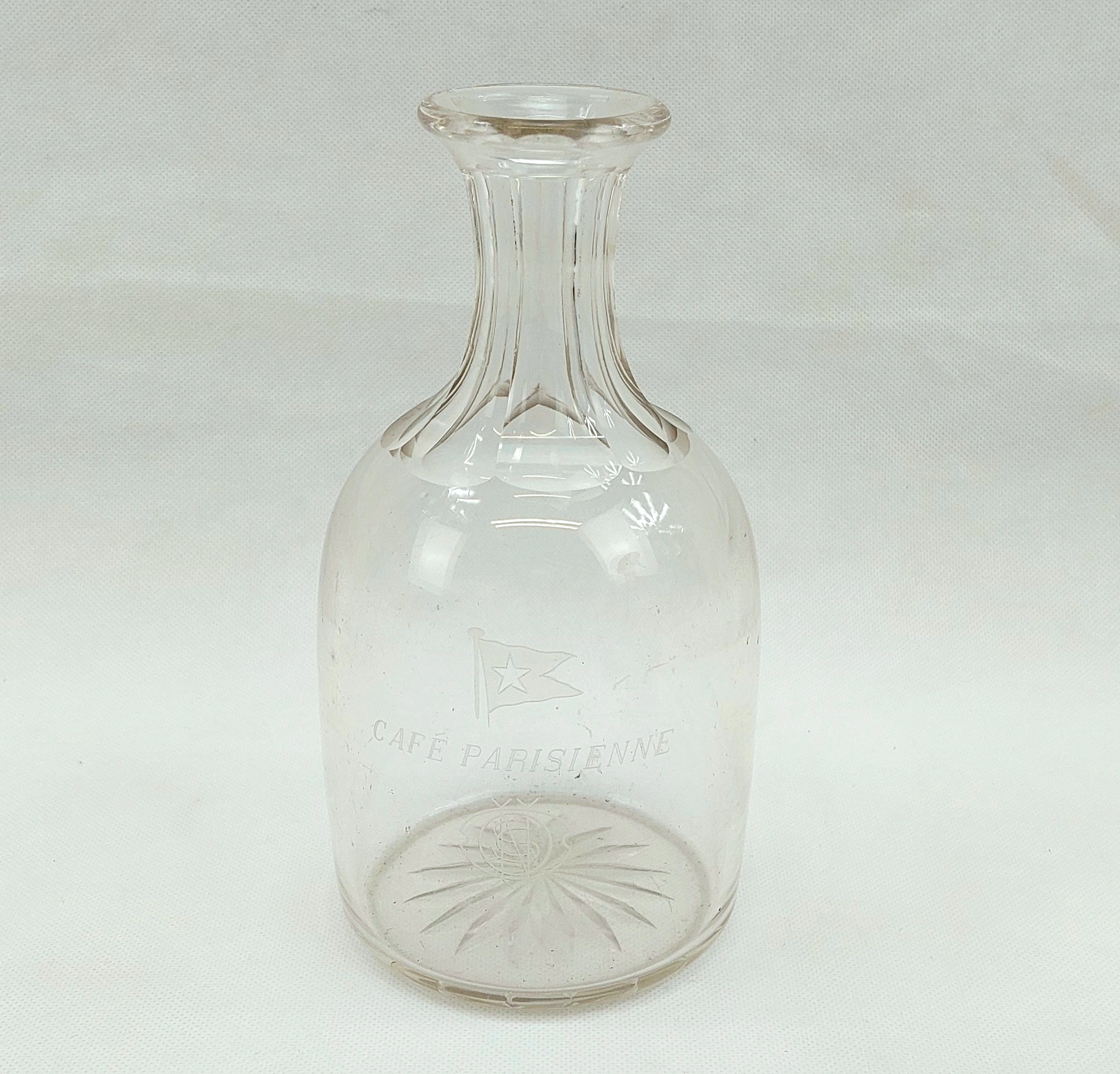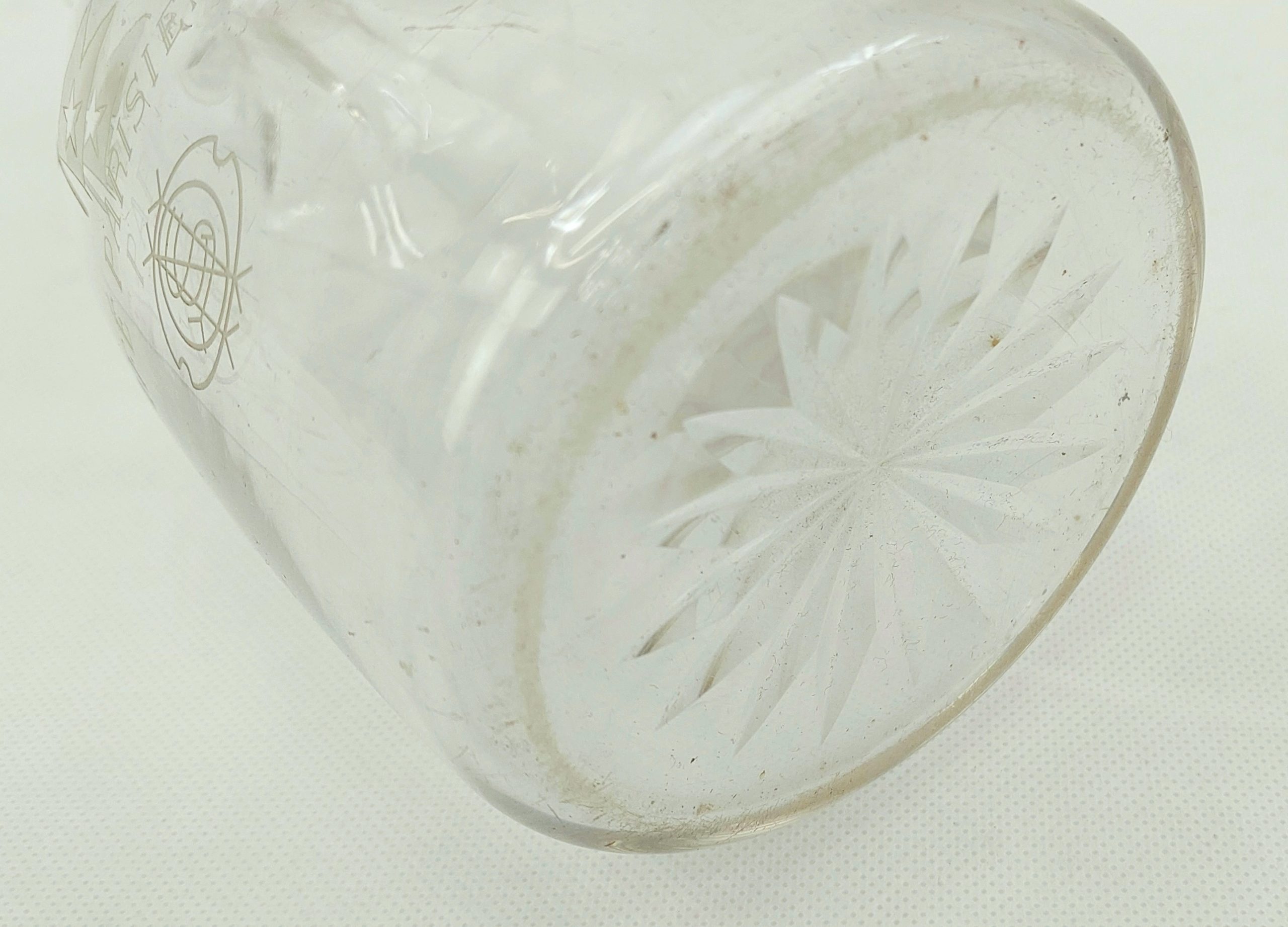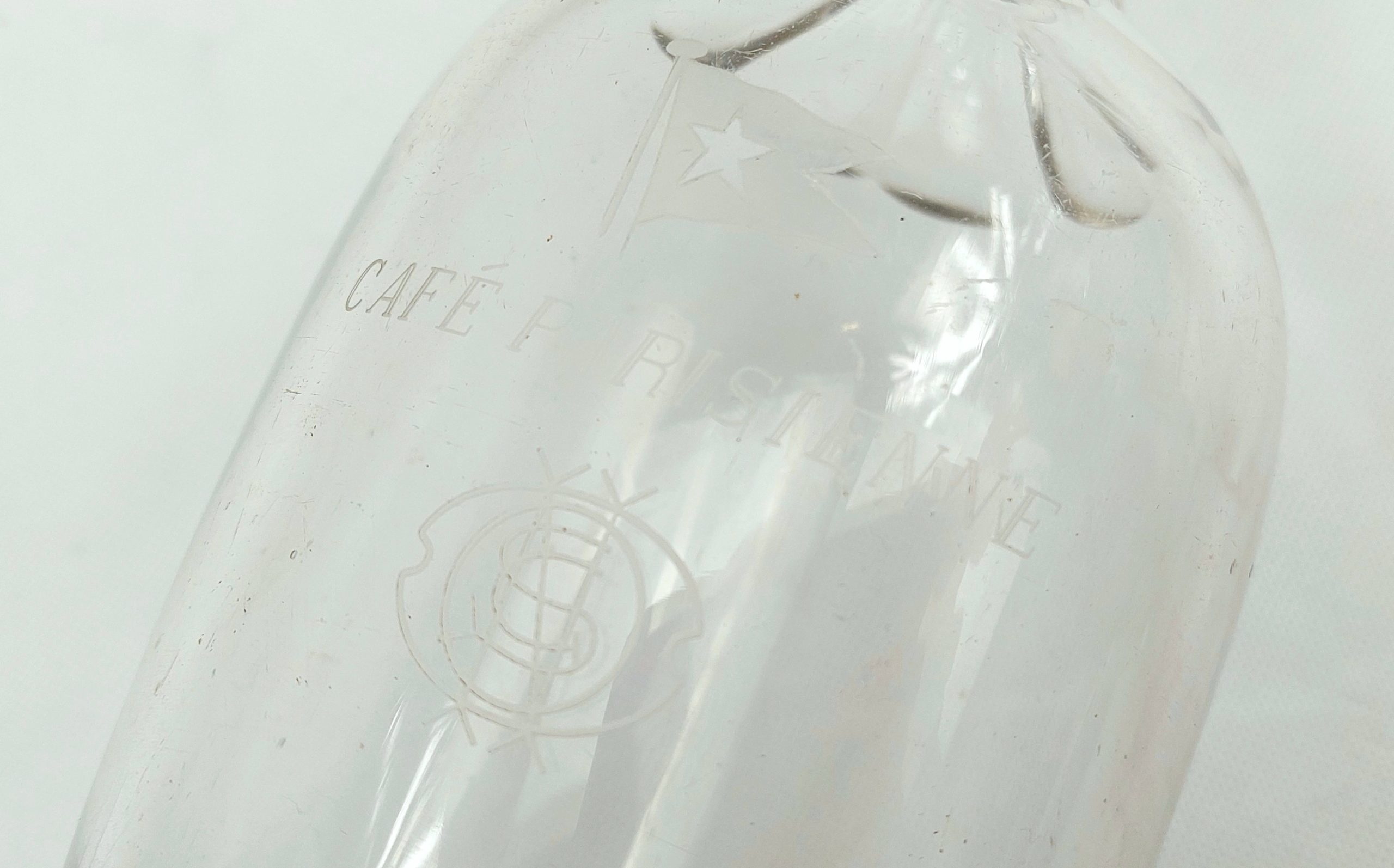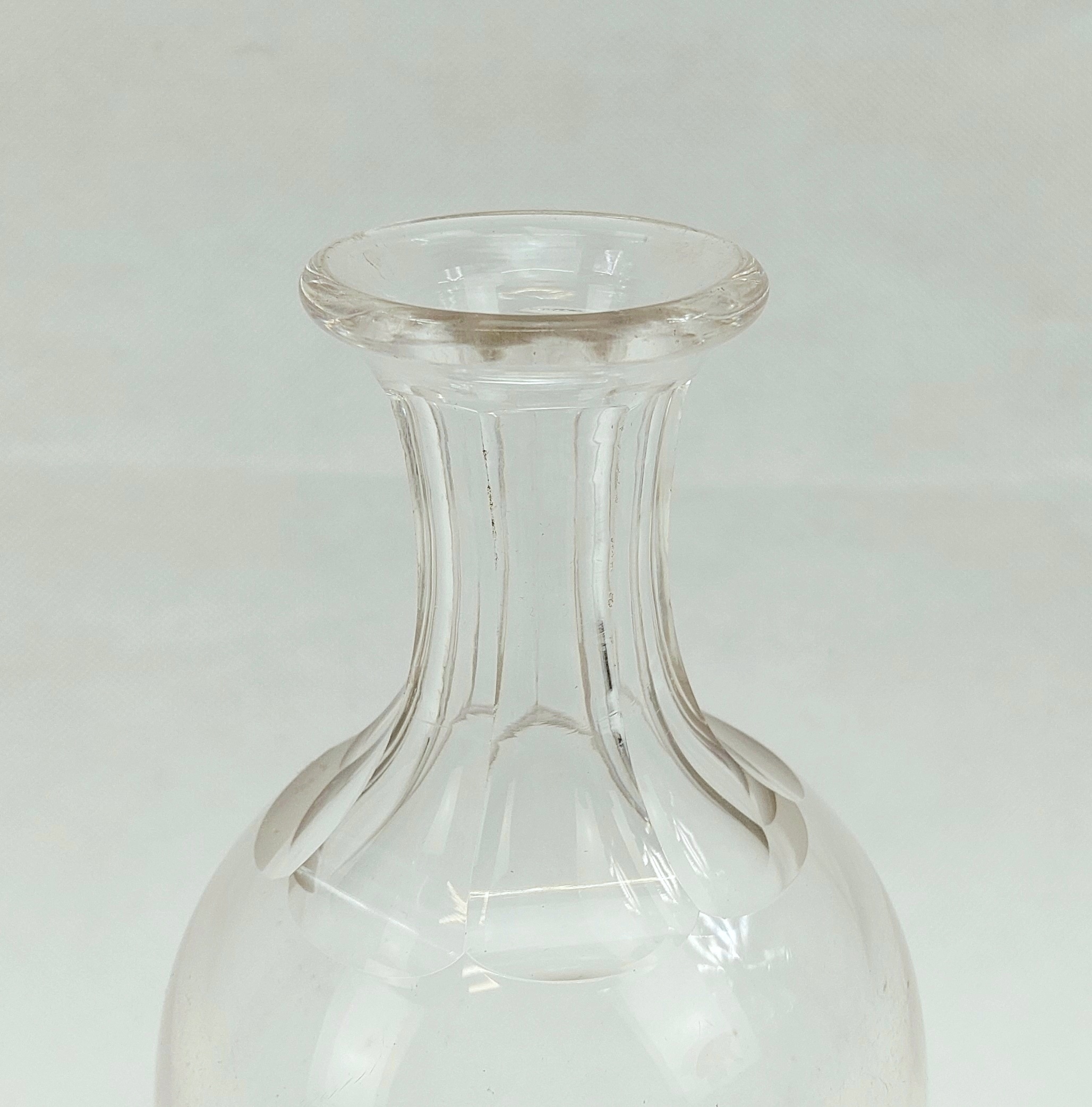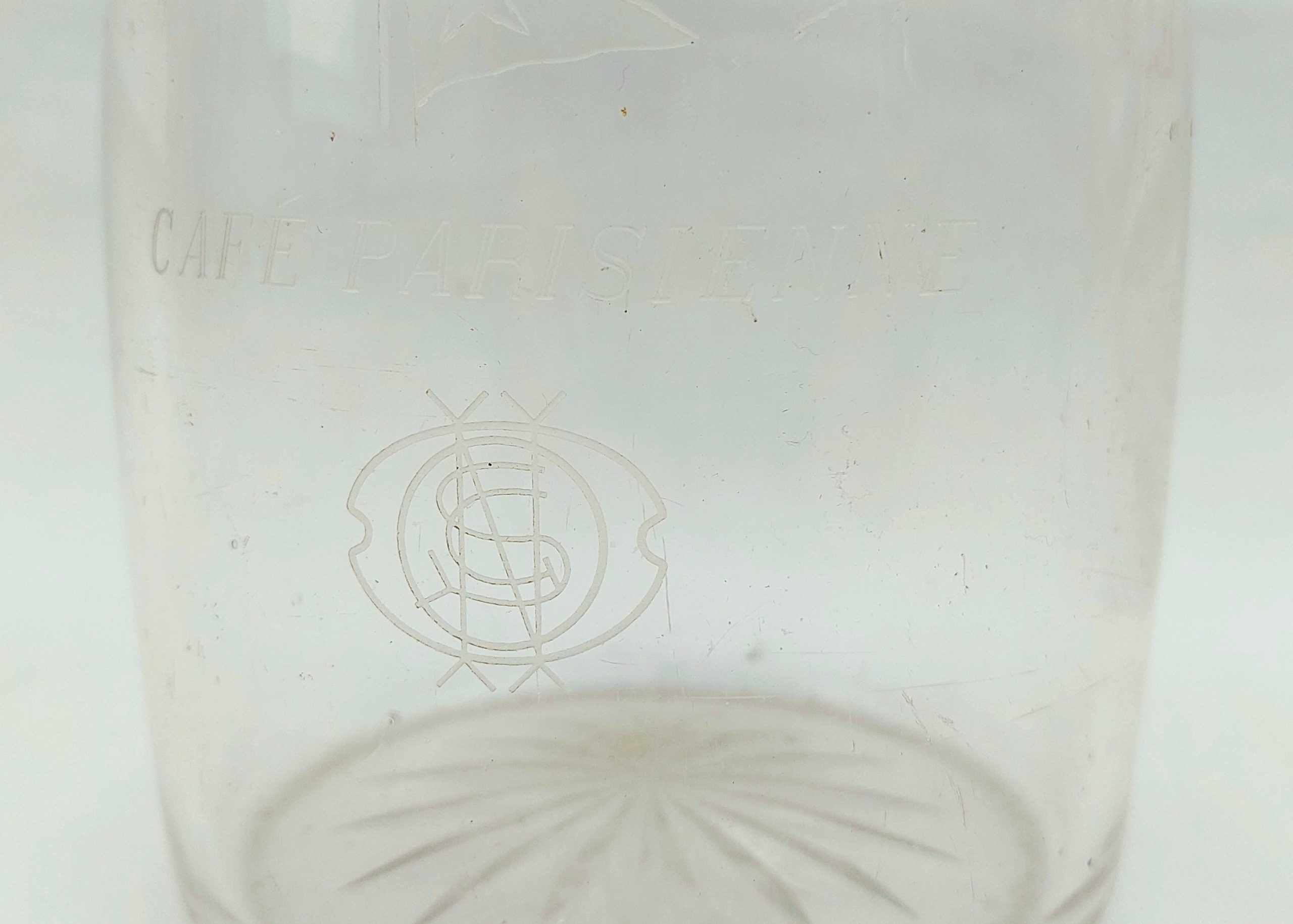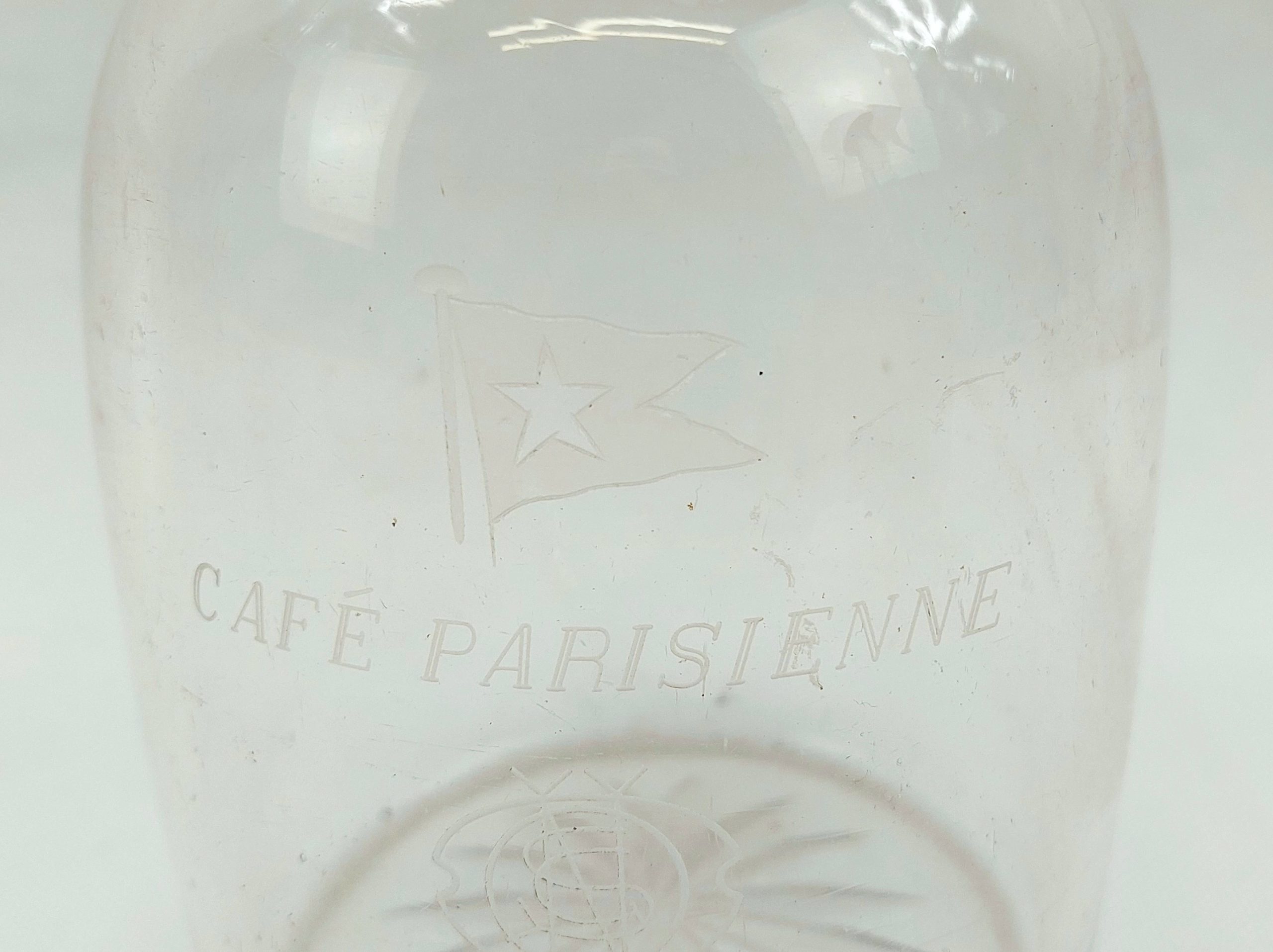~ White Star Line RMS Titanic Cafe Parisienne Water Carafe ~
The carafe bears the etched White Star Line flag and the words ‘Cafe Parisienne’. It has a fluted neck and a star base.
The carafe was owned by George Fredrick Bull, a former White Star Line employee, and was retained by his family.
~ Cafe Parisienne ~
The Café Parisien was a Parisian-style cafe and a new feature on the RMS Titanic. It was located on B Deck starboard just off the Aft Grand Staircase, It was promoted as a replica of a Parisian sidewalk café; painted in white and trellises with live English Ivy and a long green carpet that ran the length of the room. It was designed to occupy a part of the space which on the Olympic served as a rarely used B-Deck promenade. Located on the starboard side, the café was connected to the À la Carte Restaurant.
Like the restaurant, the Café Parisien was open from 8:00 am to 11:00 pm and shared the same menu and servers. The café was furnished with wicker tables and chairs, accommodating up to 68 passengers, and was decorated in ivy-covered trellises and other climbing plants. There was a tiered buffet stand in the center of the room and sideboards were sited at each end of the room containing the china service. The Café Parisien was most popular among young adults.
The Café Parisien was a place where friends could meet for conversation with drinks (coffee or a little something stronger) and light refreshments.
The Café Parisien was the first of its kind on any British passenger liner. On the RMS Olympic, this spot was part of the First Class Promenade which ran the full length on both sides of B Deck. It was later installed on the RMS Olympic and privacy screens were added and double doors added as well, making it enclosed. On April 14th, the night Titanic struck the iceberg, the menu included oysters, salmon, roast duckling, sirloin of beef, pate de foie gras, peaches in Chartreuse jelly and chocolate and vanilla éclairs.
~ George Frederick Bull ~
Bull was a White Star Employee, but not a Titanic Crew member. That is why his name is not on the crew lists. Part of his job was to organise coaling, check Passenger lists which is why he was one of the last people to leave her.
Bull started life working for the coal board but having moved to Southampton wished to work on Ocean liners, he took a pay cut to join the American Line. He sailed to America on several occasions and his Discharge book indicates he served with Captain Smith (which I have) aboard the Adriatic. This line was incorporated with the White star line in 1907.
In 1908 Bull moved to the drawing office in Southampton and at some point married Clarissa who had been in charge of that office.
In 1911 a national coal strike affected the shipping lines, so that by March 1912 the Titanic was not able to undertake the first sailing to New York due to the fuel shortage. Bull and others sailed to Wallasey to obtain coal by force. This was achieved but Bull sustained injuries and returned to Southampton and left the ship to go to Southampton General Hospital.
He subsequently rose to become purchasing manager and was based in London and Manchester. During the 1930s business slumped and he had the idea of taking Scholar educational trips. Papers survive listing him as the organiser aboard the SS Dorric.
During the war years Bull won an award for turning shipping around in record time in Manchester. Some documents from that time exist as well as his hat, briefcase and named suitcase.
An existing original photograph shows Bull, McPherson and Sir Percy E Bates at Bulls retirement ceremony in 1947 where he received the Coal Strike pistol in a Titanic Flare pistol box which was used aboard the ship but taken onto a lifeboat when it contained a flare pistol.
Bull’s son Douglas was contacted by a Cunard official and many items relating to the Titanic and his service were passed to the company archive. Some remaining photographs and artifacts were bought privately from the family.


